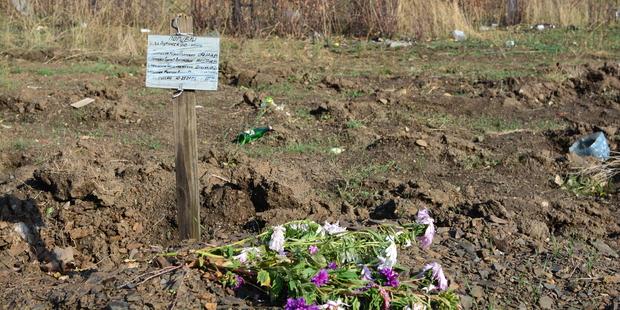An Amnesty International investigation into allegations of execution-style and other deliberate killings by pro-Russian separatists and pro-Kyiv forces has found evidence of isolated incidents attributable to both sides, but not on the scale reported by Russian media and authorities.
Summary killing during the conflict in eastern Ukraine, presents the findings of research conducted in eastern Ukraine (Donbass) in late August and late September 2014 and interviews with victims of human rights abuses and their families, eyewitnesses, local officials in the Luhansk and Donetsk regions, medical personnel and combatants on both sides.
The discovery of ‘mass graves’ in the Donetsk region
On 23 September Russian media reported the discoveries of “mass graves” in Komunar and Nyzhnya Krynka, two adjacent villages in the Donetsk Region, which until two days previously, had been held by Kyiv-controlled forces. They described the discovery of women’s bodies with signs of torture and the body of a pregnant woman. Russia’s Foreign Minister, Sergei Lavrov, was reported later as saying that more than 400 bodies had been discovered in the graves in this area and calling for international investigations.
An Amnesty International delegation visited the area on 26 September. The delegation found strong evidence implicating Kyiv-controlled forces in the extrajudicial executions of four men buried in two graves near the village of Komunar. Five further bodies buried in a single grave nearby were revealed to belong to separatist fighters. Amnesty International spoke to members of their unit who said they had been killed in the course of hostilities.
Killings of detainees by pro-Russian insurgent groups
Amnesty International has received a growing number of allegations of execution-style and other deliberate killings in eastern Ukraine by separatist forces since the start of the conflict in April 2014. Victims have included pro-Ukrainian activists and suspected sympathisers, local criminals and detained combatants.
The first apparent confirmation of these allegations was the discovery of two bodies on 19 April 2014 near the town Raigorodok in Donetsk Region. They were later identified as Volodymyr Rybak, a local pro-Ukrainian activist and MP from Batkivshchyna (Fatherland) party, and Yury Popravko, a student from Kyiv. The bodies bore signs of torture.
Amnesty International found compelling evidence of the killing of two captives on 22 July. Both were held by separatist fighters in the police detention facility they had taken over in Severodonetsk, Luhansk Region.
Background
Conflict in eastern Ukraine started after pro-Russian separatists occupied local administration buildings and security services installations in different towns in Donetsk and Luhansk Regions in April and May 2014, following the annexation of the Crimean peninsula by the Russian Federation. In response the Ukrainian authorities embarked on a “counter terrorist operation”. The conflict intensified after the separatist forces left the town of Slavyansk in early July and the Ukrainian forces began retaking territory.
This advance was slowed down and rolled back in late August, when the separatist forces made a successive counter attack, allegedly with the help of the Russian military. A cease-fire agreement was signed on September 5, but it did not stop the fighting.

